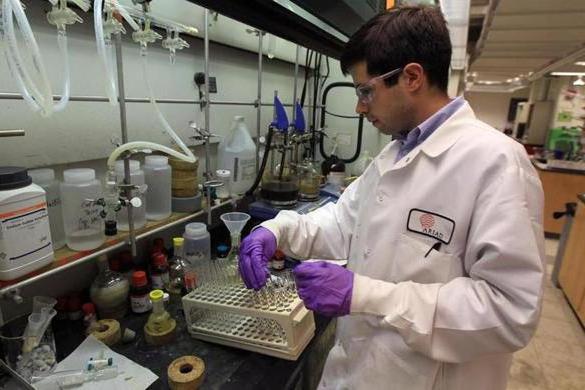Now in the world there is a huge amount of drugs, from almost all existing diseases. Creating a new drug is not only a long-term business, but also an expensive one. After the medicine is created, it is necessary to test how it acts on the human body, how effective it will be. For this purpose, clinical trials are being conducted, which we will talk about in our article.
The concept of clinical research
Any drug research is simply necessary, as one of the stages in the development of a new drug or to expand the indications for the use of an existing one. At first, after receiving the medicine, all studies are conducted on microbiological material and animals. This stage is also called preclinical studies. They are carried out to obtain evidence of the effectiveness of the drugs.
But animals are different from humans, therefore, how experimental mice respond to the drug does not mean getting the same reaction in humans.
If we define what clinical trials are, then we can say that this is a system of using various methods to determine the safety and effectiveness of a medicine for a person. During the study of the drug, all the nuances are clarified:
- Pharmacological effects on the body.
- Suction rate.
- The bioavailability of the drug.
- Withdrawal period.
- Features of metabolism.
- Interaction with other medicines.
- Safety for humans.
- The manifestation of side effects.
Laboratory studies begin by the decision of the sponsor or customer, who will be responsible not only for the organization, but also for the control and financing of this procedure. Most often, such a person is the pharmaceutical company that developed this drug.
All results of clinical trials, their progress should be described in detail in the protocol.
Research statistics
The study of drugs is carried out all over the world, this is a mandatory step before registering a drug and its mass release for medical use. Those funds that have not been tested cannot be registered and put on the drug market.
According to one of the American associations of manufacturers of drugs from 10 thousand of the studied drugs, only 250 reach the stage of preclinical studies, as a result, clinical trials will be conducted only for about 5 drugs and 1 will reach mass production and registration. This is the statistics.
Laboratory research objectives
Conducting research on any drug has several objectives:
- Establish how this drug is safe for humans. How the body will tolerate it. To do this, find volunteers who agree to participate in the study.
- During the study, the optimal doses and treatment regimens are selected to obtain the maximum effect.
- Establish the degree of safety of the drug and its effectiveness for patients with a certain diagnosis.
- Studying unwanted side effects.
- Consider expanding drug use.
 Quite often, clinical trials are conducted simultaneously for two, or even three drugs, so that their effectiveness and safety can be compared.
Quite often, clinical trials are conducted simultaneously for two, or even three drugs, so that their effectiveness and safety can be compared.
Research classification
To such a question as the classification of the study of drugs can be approached from different angles. Depending on the factor, the types of studies may be different. Here are some classification methods:
- According to the degree of intervention in patient management tactics.
- Research may vary in purpose.
In addition, there are also types of laboratory tests. Let us examine this question in more detail.
Types of studies on intervention in the treatment of the patient
If we consider the classification in terms of intervention in standard treatment, then the studies are divided into:
- Observant. In the course of such a study, there is no interference; information is collected and the natural course of all processes is monitored.
- No-intervention or non-intervention study. In this case, the drug is prescribed according to the usual scheme. In the research protocol, the issue of classifying a patient to any treatment tactic is not decided in advance. The prescription of the drug is clearly separated from the inclusion of the patient in the study. The patient does not undergo any diagnostic procedures, the data are analyzed using epidemiological methods.
- Interventional study. It is carried out when it is necessary to study yet unregistered drugs or to find out new directions in the use of well-known drugs.
Classification criterion - research objective
Depending on the purpose, general clinical trials may be:
- Preventive. They are carried out in order to find the best ways to prevent diseases in a person that he has not previously suffered from or to prevent relapse. Usually vaccines and vitamin preparations are studied in this way.
- Screening studies allow you to find the best method for detecting diseases.
- Diagnostic studies are conducted to find more effective methods and methods for diagnosing the disease.
- Therapeutic studies provide an opportunity to study the effectiveness and safety of drugs, methods of therapy.

- Studies of quality of life are conducted to understand how to improve the quality of life of patients with certain diseases.
- Accessibility programs include the use of an experimental drug in patients with life-threatening diseases. Typically, such drugs cannot be included in laboratory tests.
Types of Research
In addition to the types of studies, there are also types that you need to get acquainted with:
- A pilot study is conducted to collect the necessary data for the next stages of the study of the drug.
- Randomized involves the distribution of patients randomly into groups, they have the opportunity to receive both the study drug and the control drug.

- A controlled study of a drug explores a remedy about the effectiveness of which safety is not yet known. It is compared with an already well-researched and well-known drug.
- An uncontrolled study does not imply the presence of a control group of patients.
- A parallel study is carried out simultaneously in several groups of patients who receive the studied medicine.
- In cross-sectional studies, each patient receives both drugs that are compared.
- If the study is open, then all of its participants know the drug that the patient is taking.
- Blind or masked study implies the presence of two parties who are not aware of the distribution of patients into groups.
- A prospective study is carried out with the distribution of patients into groups, they will either receive or not the studied drug before the outcomes.
- In retrospective, the outcomes of studies already considered are considered.
- A clinical research center may be involved in one or more, depending on this, there are single-center or multi-center studies.
- In a parallel study, the results of several groups of subjects are compared at once, among which one is the control, and two or more others receive the study drug.
- A study of similar cases involves comparing patients with a specific disease with those who do not suffer from such a disease in order to identify a relationship between the outcome and the previous exposure to certain factors.
Research stages
After the production of the drug, he must go through all the research, and they begin with preclinical. They are carried out on animals, they help the pharmaceutical company to understand whether it is worth exploring the drug further.
In humans, they will begin to test the medicine only after it is proved that it can be used to treat a certain condition and it is not dangerous.
The development process of any drug consists of 4 phases, each of which is a separate study. After three successful stages, the drug receives a registration certificate, and the fourth is already a post-registration study.
Phase one
A clinical trial of the drug in the first stage boils down to a set of volunteers from 20 to 100 people. If an overly toxic drug is examined, for example, for oncology therapy, then patients suffering from this disease are selected.
Most often, the first phase of the study is carried out in special institutions, where there are competent and trained personnel. During this stage, you need to find out:
- How is the drug tolerated by humans.
- Pharmacological properties.
- The period of absorption and excretion from the body.
- Pre-evaluate the safety of its reception.
In the first phase, various types of research are used:
- The use of single increasing doses of the drug. The first group of subjects is injected with a certain dose of the drug, if it is well tolerated, then the dosage is increased for the next group. This is done until the achieved safety levels are reached or side effects begin to manifest.
- Studies of multiple incremental doses. A group of volunteers receives a small drug repeatedly, after each receipt, tests are taken and the behavior of the drug in the body is evaluated. In the next group, an increased dose is repeatedly administered, and so on, to a certain level.
Second phase of research
After the safety of the drug has been previously evaluated, clinical research methods proceed to the next stage. For this, a group of 50-100 people is already recruiting.
The main goal at this stage of the study of the drug is to determine the necessary dosage and regimen. The amount of medication given to patients in this phase is slightly lower than the highest doses received by subjects in the first phase.
At this stage, there is always a control group. The effectiveness of the drug is compared with either a placebo or another drug that has proven to be highly effective in treating this disease.
3 phase of research
After the first two phases, the drugs continue to be examined in the third stage. A large group of people up to 3000 people is participating. The purpose of this step is to confirm the effectiveness and safety of the drug.
Also at this stage, the dependence of the result on the dosage of the drug is studied.
After the medicine at this stage confirms its safety and effectiveness, a registration dossier is prepared. It contains information about the results of the study, the composition of the medicine, shelf life and storage conditions.
Phase 4
This stage is already called post-registration research.The main objective of the phase is to collect maximum information about the results of prolonged use of the drug by a large number of people.
The question of how drugs interact with other drugs, what is the most optimal duration of therapy, how the drug affects patients of different ages is still being studied.
Study protocol
Any research protocol should contain the following information:
- The purpose of studying the medicine.
- The tasks that researchers set for themselves.
- Study design
- Study methods.
- Statistical questions.
- Organization of the study itself.

The development of the protocol begins even before all studies begin. Sometimes this procedure can take several years.
After the study is completed, the protocol is the document by which auditors and inspectors can check it.
Recently, more and more widely used various methods of clinical laboratory research. This is due to the fact that the principles of evidence-based medicine are being actively introduced into healthcare. One of them is making decisions for patient therapy based on proven scientific data, and it is impossible to get them without a comprehensive study.


